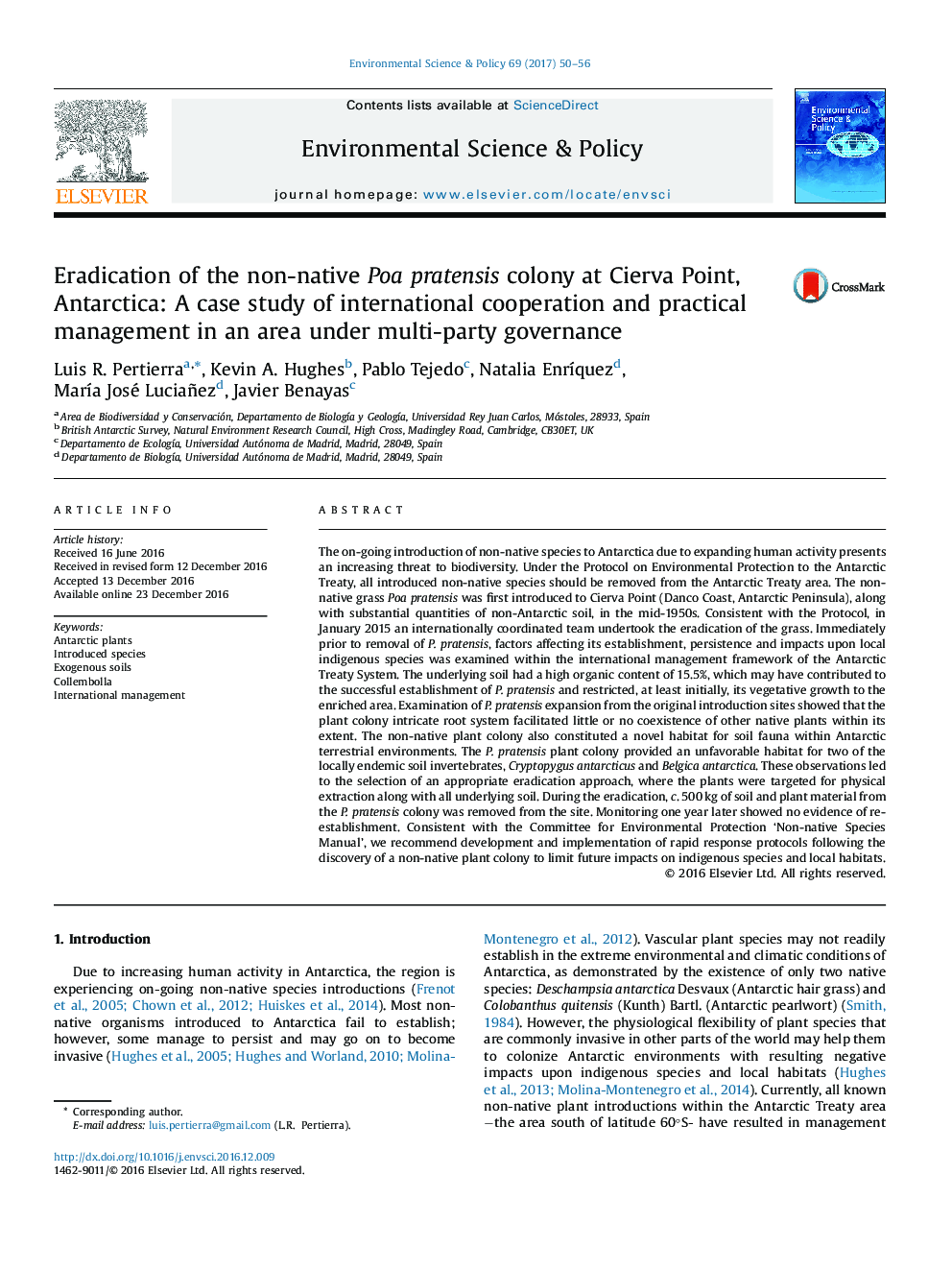| Article ID | Journal | Published Year | Pages | File Type |
|---|---|---|---|---|
| 5115867 | Environmental Science & Policy | 2017 | 7 Pages |
â¢The non-native Poa pratensis persisted at Cierva Point for 58 years without management.â¢In recent years, the grass began expanding the introduction site.â¢The root system provided a less favourable habitat for edaphic fauna.â¢Enacting an intervention required three years of discussions among Antarctic Treaty Parties.â¢Plant removal was feasible due to constraints in its reproduction under Antarctic conditions.
The on-going introduction of non-native species to Antarctica due to expanding human activity presents an increasing threat to biodiversity. Under the Protocol on Environmental Protection to the Antarctic Treaty, all introduced non-native species should be removed from the Antarctic Treaty area. The non-native grass Poa pratensis was first introduced to Cierva Point (Danco Coast, Antarctic Peninsula), along with substantial quantities of non-Antarctic soil, in the mid-1950s. Consistent with the Protocol, in January 2015 an internationally coordinated team undertook the eradication of the grass. Immediately prior to removal of P. pratensis, factors affecting its establishment, persistence and impacts upon local indigenous species was examined within the international management framework of the Antarctic Treaty System. The underlying soil had a high organic content of 15.5%, which may have contributed to the successful establishment of P. pratensis and restricted, at least initially, its vegetative growth to the enriched area. Examination of P. pratensis expansion from the original introduction sites showed that the plant colony intricate root system facilitated little or no coexistence of other native plants within its extent. The non-native plant colony also constituted a novel habitat for soil fauna within Antarctic terrestrial environments. The P. pratensis plant colony provided an unfavorable habitat for two of the locally endemic soil invertebrates, Cryptopygus antarcticus and Belgica antarctica. These observations led to the selection of an appropriate eradication approach, where the plants were targeted for physical extraction along with all underlying soil. During the eradication, c. 500Â kg of soil and plant material from the P. pratensis colony was removed from the site. Monitoring one year later showed no evidence of re-establishment. Consistent with the Committee for Environmental Protection 'Non-native Species Manual', we recommend development and implementation of rapid response protocols following the discovery of a non-native plant colony to limit future impacts on indigenous species and local habitats.
